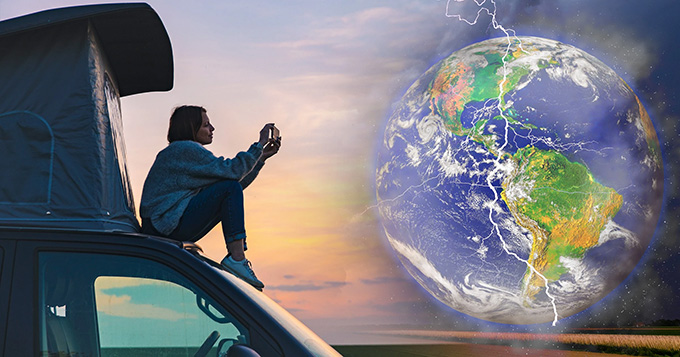
When news about the climate is published, like the Intergovernmental Panel on Climate Change’s latest report, frightening headlines like “final warning” or “now or never” are often the norm. Some activists call this approach “climate doomism”, and are quick to criticise media publications and other influencers for it. Climate doomism is the view that humanity has lost the climate battle, and we feel nothing but helplessness and anxiety about it.
In a massive global survey, the results of which were published in 2021, 10,000 children and young people (aged 16-25) shared their feelings about the environment. The results were astonishing: from Brazil to France, Nigeria to the UK, at least 84% said they were moderately worried about climate change, with 59% saying they were very or extremely worried.
How helpful is it to scare someone who is already scared? The tone of how we share information can greatly affect how people engage with it.
The biological response of “fight or flight” applies to how we respond to information, including when scrolling the news. Research shows that fear increases the impact of a piece of information. It attacks all our senses. We must react. But without clear instructions on how to channel this energy, we are more likely to try to avoid the information altogether.
In the 1960s, social psychologists at Yale University conducted an experiment on the impact of fearful stories on decision making. They asked a group of students to read a booklet about the risks of tetanus infection. They then asked participants whether they’d like to go get vaccinated against it.
There were four versions of the leaflet, conveying different levels of fear in their descriptions of the disease and case studies of patients. Some had more specific recommendations on where to get a jab.
The researchers found a high level of fear, worry, even nausea in those who engaged with the most dramatic version of the text. Great, researchers thought, these scared students will surely get jabbed.
However, most students did not bother to go to the vaccination centre around the corner. But 15% did – they read the variation of the leaflet that had direct instructions for action. They knew how to find the vaccination centre, saw a map, opening hours and a reminder that the vaccine was free.
This and other studies show that fear can wear us down, unless we have clear instructions on how to act.
Turning hope into action
I’ve studied viral journalism, the efforts of journalists to make stories spread across social media and hook readers online. I have identified a range of triggers that professionals pull to keep readers engaged with a story.
The emotions of awe, anger and anxiety activate people to like, click, comment and share. As one interviewee put it, “LOL, WTF and OMG” reactions make for a “guaranteed” click. When the story is too sad, however, it instead “deactivates” readers, making them more likely to withdraw, stay quiet and not share or click much.
There are better ways than doomism to post about climate change on social media to help motivate people to act. Before you share a link or post on your Instagram story, here are some things to remember.
1. Help people see themselves
I found in my research that one easy way to make a story go viral is the identity spin. When the subject of a story is similar to readers in identity – a parent, student, son or daughter – readers can “see themselves” and connect more with the story.
Think about who you want to reach with your post. A piece about a 20-year-old university student with no preconditions suffering badly from climate-related heat is likely to attract the attention of other students, rather than a more general piece about “a Londoner”. A story giving advice on dealing with eco-anxiety that uses images of Generation Z women might be good to share with other women in that demographic.
2. Share small solutions
The world-renowned psychologist Albert Bandura explained that people gain confidence and develop skills through small steps. Once we achieve one small thing, we feel empowered to climb higher and aim bigger. This is called self-efficacy.
The concept can apply to climate action too. Looking at individual solutions can seem trivial, but it is a great way to tap into the power of self-efficacy. Consider sharing information that helps people complete achievable steps, such as shopping secondhand, recycling more, changing their diet and voting for politicians who are serious about addressing climate change.
3. Stay positive
Research shows that images and stories of achievements and solutions help generate feelings of self-efficacy in readers. People are more likely to change their behaviour after seeing solar panels in media stories, rather than smoke coming from a factory pipe.
Whether you are a journalist, influencer, activist or just a regular social media user, sharing stories that discuss positive green developments rather than doomism is more likely to move people to action. Tackling a scary situation means taking at least part of it under control.
Author Bio: Anastasia Denisova is a Senior Lecturer in Journalism at the University of Westminster